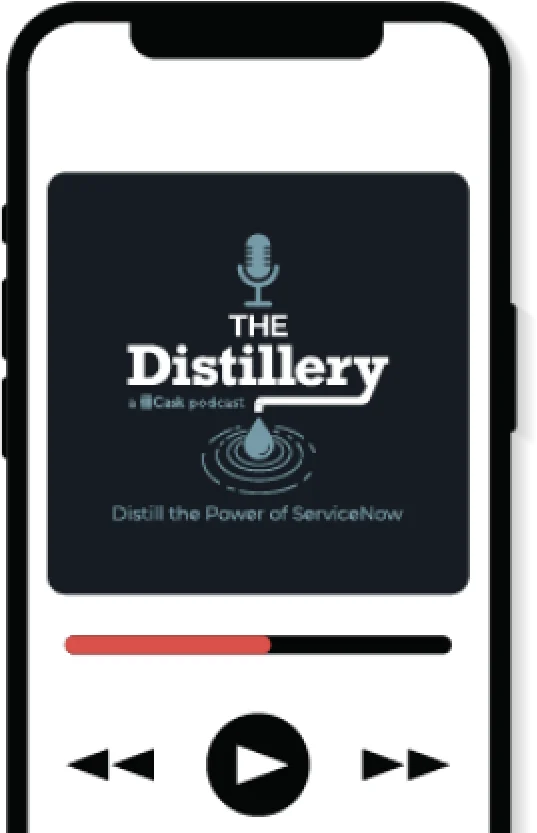The People, Process, Technology (PPT) framework has been a cornerstone of effective organizational management for decades. Originally pioneered in the “Diamond Model” by business management expert Harold Leavitt in the 1960s, it was popularized in the information security world by Bruce Schneier in the 1990s. In today’s rapidly changing digital world, the PPT framework has taken on even greater significance.
With the rise of digital transformation sweeping across industries, businesses are embracing new technologies and adapting their processes to remain competitive. In fact, experts predict the global digital transformation market will grow from around $600 billion in 2022 to a staggering $1.5 trillion by the end of 2027, with innovation in artificial intelligence at the forefront of growth.
The PPT framework provides a strategic approach to navigate a transformative journey by addressing the interplay between people, processes, and technology. By harnessing the power of this framework, organizations can unlock the full potential of digital transformation, ensuring seamless integration, streamlined workflows, and enhanced productivity beyond the project management lifecycle.
In this blog, we will delve into the PPT framework, exploring its core principles and uncovering practical strategies to leverage its benefits for your organization’s digital transformation endeavors. Whether you’re a business owner, manager, or team leader, you’ll discover practical ways to implement the framework and unlock the full potential of your team.
How the PPT framework works
By using the PPT framework, businesses are encouraged to think multidimensionally. The PPT framework is all about how the three elements interact. The people do the work. Processes make this work more efficient. Then, technology helps people do their tasks and automates the processes. Businesses can achieve organizational efficiency by balancing the three and optimizing the relationships between people, processes, and technology.
The PPT framework can be visualized as a golden triangle with three equal sides, where each component plays an essential role in achieving successful business transformation. If any one of the components is not given adequate attention, it can affect the balance and success of the entire framework.
When technology changes, it is crucial to modify the people and processes to adapt to the new tools. Some businesses may make the mistake of solely relying on new technology to solve their problems without paying attention to the people and processes. However, to maximize the effectiveness of technology, it is essential to ensure that the processes and the people utilizing the tools are optimized for the best results.
If organizations don’t implement strong processes, the actions of the people will be highly ineffective. They’ll also waste a lot of the value delivered by technology. If people don’t know how to use the technology properly, then the company won’t create value from its investment in technology. There will be a similar outcome if the new technology doesn’t integrate with the processes. On the other hand, if the organization obsesses about the process too much, then it will end up with a good plan on paper but without the right people or technology to support it.
The people
The “people” aspect refers to the human resources available to the business. These are the individuals who do the tasks described in the process, sometimes by leveraging the technology.
One of the main ways to ensure the people tier of your PPT framework is strong is to onboard the right talent. Businesses need to identify key employees with the right skills, experience, and attitude for the job at hand. However, more often than not, key individuals are occupied or busy. Thus, the managers will have to wait for the right people to become available, hire new employees for the role, redirect people from other projects, or outsource the tasks to a consultant or agency. These are key decisions that are crucial to the success of the PPT framework impact.
The people also need clear role definitions so everybody knows their responsibilities. This will help in decision-making, technology selection, process deployment, and personnel hiring. Many businesses fall into the trap of concentrating too heavily on technology and processes while almost ignoring the people involved. However, ensuring that the team consists of the right people with the right communication is also critical.
Finally, businesses need to get buy-in from the people. They need to understand what they have to do, why they’re doing it, and how the changes affect them. Without full buy-in from the people, it’s impossible to implement any new processes or technology. Otherwise, businesses will observe slow adoption or suboptimal usage. If required, people can be empowered through proper training.
The process
A process is the steps or actions that combine to produce a particular goal. In the PPT framework, the process defines the “how” aspect. How will we achieve the desired result? How do we utilize the people and technology to solve the business problem? Business processes are repeatable actions that theoretically produce the same result independent of who performs them.
As more businesses embrace digital transformation, automation has become an essential aspect of process design and implementation. By automating repetitive tasks, organizations can streamline their processes, reduce errors, and improve efficiency. Automation can range from simple rules-based automation to more complex artificial intelligence (AI) and machine learning (ML) solutions.
However, it’s important to keep in mind that not all processes can or should be automated. Some business processes require human decision-making and critical thinking skills, while others require creativity and innovation. Therefore, businesses should carefully evaluate which processes are suitable for automation and which require human intervention.
When designing and implementing automated processes, it’s crucial to ensure that people understand their role in the process and receive proper training. The goal should be to optimize the process while keeping the human element in mind.
Processes should also be flexible enough to adapt to changes in business needs or advancements in technology. Automation should complement and enhance the process, not replace it entirely. It’s also essential to measure the performance of automated processes using relevant metrics to identify bottlenecks, delays, and areas for improvement.
The technology
Technology has revolutionized the way businesses operate. It provides organizations with the tools to implement and automate processes efficiently. However, it is important to understand that technology is only a tool and not a solution on its own. Technology must align with an organization’s overall strategy, and it must fit into the organization’s culture and processes.
Too often, organizations make huge investments in technology without considering how it aligns with their strategy, culture, and processes. This approach is not effective, and the investment may not bring the expected ROI. Before investing in any technology, organizations need to ensure that they understand the problem they want to solve, recruit and train the right talent, and define the necessary processes to support the technology.
Technology alone cannot solve problems or bring success to an organization: It must be supported by the right people and processes to achieve the desired results. Organizations must prioritize the people and process aspects of the PPT framework and consider technology as the final consideration.
Benefits of using the PPT framework
Implementing the People, Process, Technology framework offers numerous advantages for organizations seeking to optimize their operations and achieve sustainable growth. Here are some of the key benefits of using this framework:
- Alignment and integration: The PPT framework facilitates alignment and integration across all three components, creating a cohesive ecosystem within the organization. By aligning people, processes, and technology, businesses can ensure that everyone is working toward a common goal and leveraging technology effectively within well-defined processes. This alignment fosters collaboration, reduces silos, and enhances communication and coordination among different teams and departments.
- Operational efficiency: The PPT framework enables organizations to enhance their operational efficiency by identifying and eliminating bottlenecks, redundancies, and inefficiencies in processes. By mapping the entire value stream and evaluating the roles of people and technology at each step, businesses can streamline workflows, automate repetitive tasks, and optimize resource allocation. This results in increased productivity, reduced costs, and improved customer satisfaction.
- Agility and adaptability: In today’s dynamic business landscape, the ability to adapt quickly to changing market conditions and technological advancements is crucial. The PPT framework empowers organizations to be agile and responsive by facilitating the continuous evaluation and improvement of processes and technology. It encourages a culture of innovation and encourages employees to embrace change, fostering a competitive advantage in an ever-evolving market.
- Enhanced decision-making: The PPT framework provides decision-makers with comprehensive insights and data-driven analysis. By integrating the people, processes, and technology components, organizations can gather valuable information and metrics to measure performance, identify trends, and make informed decisions. This promotes evidence-based decision-making and enables proactive adjustments to achieve strategic goals and drive business success.
- Scalability and growth: As organizations scale and expand, the PPT framework ensures scalability and supports sustainable growth. By designing processes and selecting technology solutions that can adapt to increased demands, businesses can avoid bottlenecks and inefficiencies that hinder growth. The framework also facilitates the smooth onboarding and integration of new employees, ensuring that the organization can scale its operations effectively without compromising quality or customer experience.
By leveraging the benefits of the PPT framework, businesses can achieve a harmonious balance between people, processes, and technology, unlocking their full potential and driving success in the digital age. In the next section, we will explore practical strategies and best practices for implementing the PPT framework within your organization.
How to transform your organization with People, Process, Technology
To truly achieve successful transformation and organizational change, it’s important to focus on the people, process, and technology aspects of the PPT framework. Neglecting any of these components can slow down the effectiveness of your efforts. Here are some key strategies to enhance your organization using the PPT framework:
- Involve people in decision-making: Many change initiatives fail because they overlook the importance of involving people outside of management in decision-making processes. To gain buy-in and ensure long-term success, include employees from various levels and departments in the decision-making process. This fosters a sense of ownership and encourages a culture of continuous improvement.
- Identify the biggest problem: Assess your organization’s biggest challenges and identify the areas that require improvement. Consider the interaction between people, processes, and technology. For example, if tasks are not completed quickly enough, focus on automating processes using technology. If efficiency is lacking, analyze the interaction between people and processes to identify scaling opportunities. If innovation is lacking, explore how people and technology can collaborate to drive innovation.
- Maximize existing technology: Before investing in new technology, thoroughly evaluate the technology you already have. Oftentimes, organizations overlook the full potential of their existing solutions. Conduct a critical analysis to ensure you are leveraging your current technology to its fullest extent. You might discover untapped features or functionalities that can significantly improve your processes.
- Consider organizational culture: Your company’s culture plays a vital role in facilitating change and effective communication. Assess how decisions and changes are communicated within your organization. If necessary, implement training programs to equip employees with the skills needed for success and effective communication.
- Emphasize the interaction of components: Remember that the three components of the PPT framework are interconnected. People perform the work, and technology can support them in innovating and increasing efficiency. Strong processes can enhance efficiency, and technology can automate and streamline these processes. By recognizing and optimizing the interaction between people, processes, and technology, you can achieve holistic organizational enhancements.
By leveraging the PPT framework and prioritizing its components, you can drive transformative change and achieve sustainable success for your business and stakeholders alike.
We’re with you for what comes next
You're working in a rapidly shifting environment.
Global dynamics, AI advancements, heavy competition–the only certainty is change.
We get it. And we’re here to help you harness the full potential of ServiceNow to simplify transformation.
Let's navigate the future together.



Empower change with Cask’s PPT expertise
Master the people, process, and technology framework with Cask to enhance operational efficiency and innovation in your digital journey. Our expertise in integrating these key elements elevates your business success.
We’re with you for what comes next
You're working in a rapidly shifting environment.
Global dynamics, AI advancements, heavy competition–the only certainty is change.
We get it. And we’re here to help you harness the full potential of ServiceNow to simplify transformation.
Let's navigate the future together.



Recommended articles
LET'S INNOVATE
Book a conversation
Cask expertise, on tap, to understand and align to your unique challenges and desired outcomes. Our team will contact you to better understand your needs and set up a meeting with Cask advisors, aligned to your goals.



Sign up for our Distillery Podcast
Stay up to date with the latest episodes







